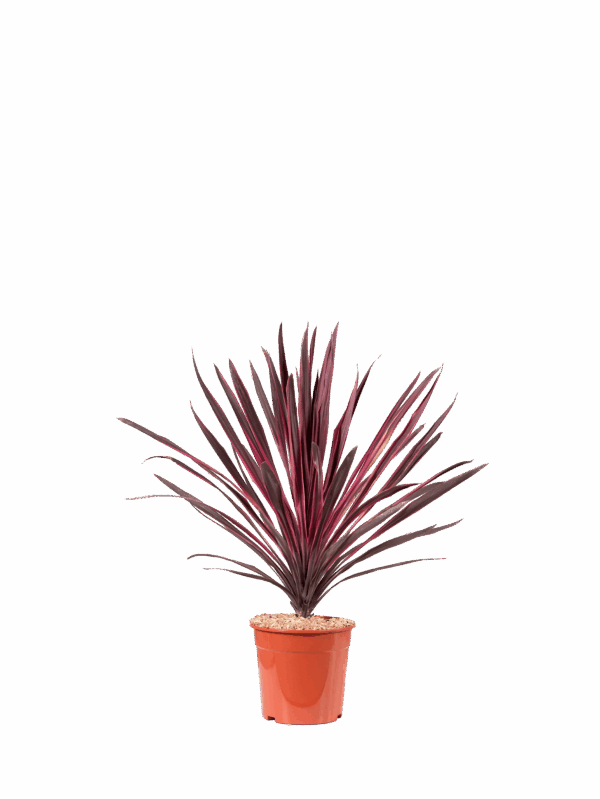CORDYLINE PASO DOBLE
Cordyline ‘Paso Doble’ is a hybrid of Cordyline banksii and stands out as one of the most lively varieties, with intense and bright pink leaves. The foliage develops in a compact rosette, well erect and close to the ground, giving the plant an extremely decorative appearance, even during the winter months. Thanks to its chromatic vivacity, this variety is perfect for enhancing terraces, balconies or flowerbeds with an exotic flavour. In mild climates, especially in coastal areas, it can be grown in open ground; alternatively, it grows well in large pots, ideal for sheltered spaces such as verandas during the cold season. The result of a recent horticultural selection, ‘Paso Doble’ combines the characteristics of Cordyline australis with those of the lesser-known Cordyline banksii, a species with a slow growth rate and lower hardiness. These perennial plants, belonging to the Agavaceae family, are native to New Zealand and grow spontaneously in very varied environments, including forest edges, river banks, clearings and humid areas near swamps. The growth of Paso Doble is moderate and the plant initially forms a dense rosette of leaves. Over time, it develops a tree-like structure with a short trunk and a few branches, each crowned by tufts of leaves. In ten years it can reach a height of about 1.5 meters and a width of 1 meter, reaching a maximum of 2.25 meters in both directions. The leaves are persistent, long and narrow, slightly curved, with pointed ends and numerous parallel veins. They measure between 40 and 70 cm in length and between 3 and 6 cm at the base. The color mixes shades of pink, purple, red and violet, arranged like broad brush strokes, making the plant very scenic. Flowering occurs between September and October, but only on mature specimens. Each branch can branch further after producing the flower. The flowers, small and cream-colored, are scented and rich in nectar, gathered in dense panicles up to 60 cm long. Tolerant of wind and salt, and not very demanding in terms of water once well rooted, this variety is particularly suited to coastal contexts, such as those of the Atlantic and the Mediterranean. It can withstand short periods of cold, down to temperatures between -5°C and -7°C. In colder areas, it is best to grow it in large containers and move them to protected places during the winter months, such as a veranda or a sheltered patio.
